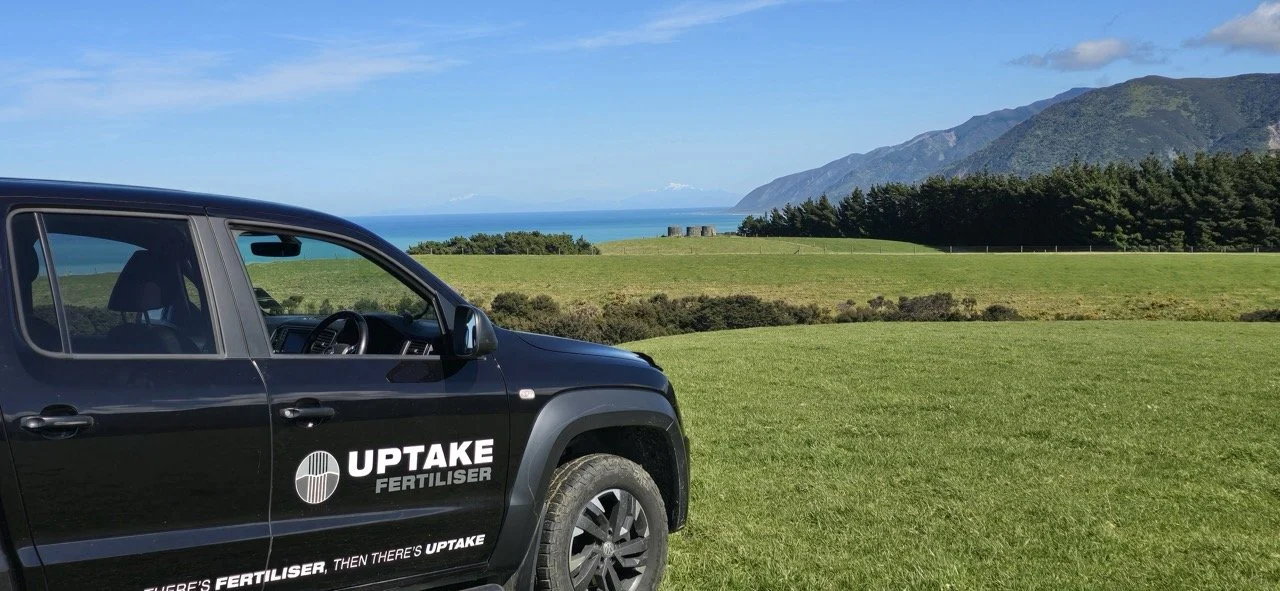
The UPTAKE process
Our team of nutrient specialists will support you throughout the process - from the first soil test to ongoing performance monitoring.
UPTAKE is more than just fertiliser - it’s a smarter, science-backed system for farm performance. Learn about the UPTAKE process below.
The UPTAKE process:
-
Every project begins with an on-farm visit. One of our Uptake Fertiliser nutrient specialists works with you to understand your farm system, goals, and current challenges. We then coordinate the collection of soil samples from each individual block, ensuring accurate results based on how your land is managed.
-
Using accredited labs and expert interpretation, we benchmark your farm for all key nutrients, including macronutrients, micronutrients, and trace elements. This analysis often uncovers hidden deficiencies - even in blocks that appear to be performing well.
-
Our team designs a tailored fertiliser blend and land management plan specifically for your farm. We base this on:
Your soil test results
The 7 Laws of Land Management
The latest research in soil and plant science
Over 35 years of hands-on experience in New Zealand agriculture
-
We use suspension fertiliser technology to deliver precise amounts of nutrients - even in very small quantities - evenly across your land. Application can be done by:
Tow and fert
Drone
Helicopter
These methods ensure efficient nutrient use and full coverage, down to the square metre and all GPS for 100% coverage.
-
With the right nutrients in the right place, your soil begins to regenerate. You’ll see:
Stronger root systems
More vigorous plant growth
Higher-quality, nutrient-dense pasture
Healthier, more productive livestock
Long-term savings on fertiliser use

